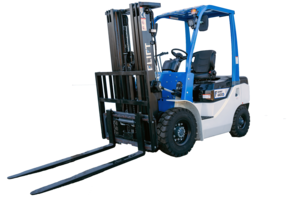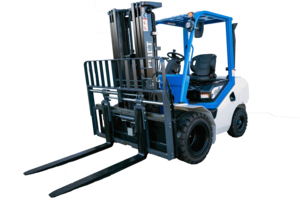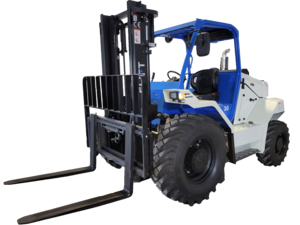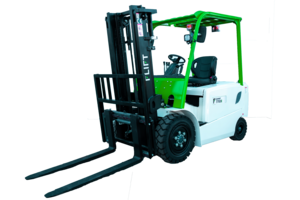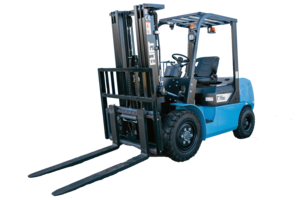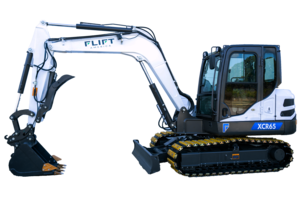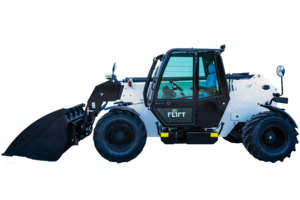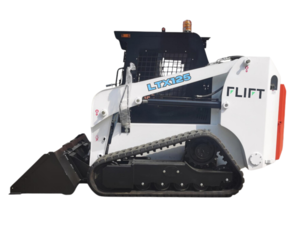FAQ
You have questions? Here's some answers!
Topics
Expand
Close All
What is the difference between the DC motor and the AC motor of an electric forklift?
The DC motor of the electric forklift uses direct current as the power source, while the AC motor of the forklift uses the alternating current as the power source. Structurally, the principle of the forklift electric DC motor is relatively simple, but the structure is more complex, which is not conducive to the later maintenance of the electric forklift motor. Although the principle of the AC motor of the forklift is more complicated, the structure is relatively simple, so it is easier to maintain than the DC motor.
The DC motor of the electric forklift introduces the current into the rotor armature through the brushes and the commutator, so that the rotor is rotated by the force in the stator magnetic field. The structure of the DC motor of the electric forklift should be composed of two parts: the stator and the rotor. The stationary part of the DC motor of the electric forklift is called the stator. The main function of the stator is to generate a magnetic field, which consists of a frame, a main magnetic pole, a commutation pole, an end cover, a bearing and a brush device. The part that rotates when the motor of the electric forklift is running is called the rotor. Its main function is to generate electromagnetic torque and induced electromotive force. It is the hub for the energy conversion of the DC motor, so it is usually called the armature. It is composed of pivot winding, commutator and fan.
The DC motor of the electric forklift introduces the current into the rotor armature through the brushes and the commutator, so that the rotor is rotated by the force in the stator magnetic field. The structure of the DC motor of the electric forklift should be composed of two parts: the stator and the rotor. The stationary part of the DC motor of the electric forklift is called the stator. The main function of the stator is to generate a magnetic field, which consists of a frame, a main magnetic pole, a commutation pole, an end cover, a bearing and a brush device. The part that rotates when the motor of the electric forklift is running is called the rotor. Its main function is to generate electromagnetic torque and induced electromotive force. It is the hub for the energy conversion of the DC motor, so it is usually called the armature. It is composed of pivot winding, commutator and fan.
What kind of electric forklift is the ideal forklift?
Today, electric forklifts have become the logistics equipment for customers and friends in the industry, and the market share of manual forklifts and internal combustion forklifts is gradually declining. Due to people's in-depth understanding of the concept of energy saving and environmental protection, electric forklifts will become the most popular material equipment in the new century. So, what kind of electric forklift is the ideal forklift? High performance and high reliability. For customers, the accessories of the electric forklift are the most critical part. In order to ensure the performance of the entire product, high-quality accessories can guarantee the entire product. The performance of the product, the AC drive system makes the electric forklift respond faster, control more precisely, and run more smoothly.
What are the composition and working principles of the important components of an electric forklift?
The operation of an electric forklift is inseparable from the battery. The battery provides the energy source, so what provides the power source? Yes, the motor. Let's talk about the composition and working principle of the motor, one of the important components of the electric forklift.
Electronic Power Steering, or EPS for short, uses the power generated by a forklift electric motor to assist the driver in power steering. The composition of EPS, although the structural components of different forklifts are different, they are generally the same. Generally, it is composed of forklift truck accessories such as forklift truck direction (steering) sensor, electronic control unit, electric motor, reducer, mechanical steering gear, and animal battery power supply.
The working principle of electric forklift steering motor: when the forklift is turning, the direction (steering) sensor will "feel" and transmit signals to the control unit of the steering wheel to distribute current to the steering motor to turn the direction, and these signals will be sent to the electronic control unit through the data bus. , the electronic control unit will send action commands to the forklift motor controller according to the data signals such as the transmission torque and the direction to be rotated, so that the forklift motor will output the corresponding torque according to the specific needs, thus generating power steering. If it is not turned, the system will not work, and will be in a standby (sleep) state waiting to be called. Due to the working characteristics of electric power steering, the forklift driver will feel that driving such a forklift has a better sense of direction and is lighter. At the same time, because it does not work when it does not turn, it saves energy consumption to a certain extent.
Since the forklift electric power steering system only needs electricity and no hydraulic pressure, many components are omitted compared with the mechanical hydraulic power steering system. There are no oil pumps, oil pipes, pressure flow control valves, oil storage tanks, etc. required by the hydraulic system. The number of forklift accessories is small, the layout is convenient, and the weight is lighter. And no "parasitic losses" and liquid leakage losses. Therefore, the electric power steering system can save energy by about 80% under various driving conditions, which improves the running performance of the entire electric forklift accessories. Therefore, it has been rapidly promoted in recent years, and it is also the development direction of the power steering system in the future.
In order to ensure the portability of the forklift when turning on the spot or turning at low speed, the displacement of the oil pump is determined by the flow rate of the forklift engine at idle speed. However, most of the time when the forklift is running at a speed higher than idle speed and in a straight line, most of the oil output by the oil pump can only be returned to the oil storage tank through the control valve, causing great "parasitic losses". Therefore, in order to reduce such unnecessary losses, a motor-driven oil pump is used. When the electric forklift is driving straight, the motor runs at a low speed, and when the forklift turns, the motor runs at a high speed. By controlling the speed of the forklift motor, the flow and pressure of the oil pump are adjusted to reduce "parasitic losses."
Electronic Power Steering, or EPS for short, uses the power generated by a forklift electric motor to assist the driver in power steering. The composition of EPS, although the structural components of different forklifts are different, they are generally the same. Generally, it is composed of forklift truck accessories such as forklift truck direction (steering) sensor, electronic control unit, electric motor, reducer, mechanical steering gear, and animal battery power supply.
The working principle of electric forklift steering motor: when the forklift is turning, the direction (steering) sensor will "feel" and transmit signals to the control unit of the steering wheel to distribute current to the steering motor to turn the direction, and these signals will be sent to the electronic control unit through the data bus. , the electronic control unit will send action commands to the forklift motor controller according to the data signals such as the transmission torque and the direction to be rotated, so that the forklift motor will output the corresponding torque according to the specific needs, thus generating power steering. If it is not turned, the system will not work, and will be in a standby (sleep) state waiting to be called. Due to the working characteristics of electric power steering, the forklift driver will feel that driving such a forklift has a better sense of direction and is lighter. At the same time, because it does not work when it does not turn, it saves energy consumption to a certain extent.
Since the forklift electric power steering system only needs electricity and no hydraulic pressure, many components are omitted compared with the mechanical hydraulic power steering system. There are no oil pumps, oil pipes, pressure flow control valves, oil storage tanks, etc. required by the hydraulic system. The number of forklift accessories is small, the layout is convenient, and the weight is lighter. And no "parasitic losses" and liquid leakage losses. Therefore, the electric power steering system can save energy by about 80% under various driving conditions, which improves the running performance of the entire electric forklift accessories. Therefore, it has been rapidly promoted in recent years, and it is also the development direction of the power steering system in the future.
In order to ensure the portability of the forklift when turning on the spot or turning at low speed, the displacement of the oil pump is determined by the flow rate of the forklift engine at idle speed. However, most of the time when the forklift is running at a speed higher than idle speed and in a straight line, most of the oil output by the oil pump can only be returned to the oil storage tank through the control valve, causing great "parasitic losses". Therefore, in order to reduce such unnecessary losses, a motor-driven oil pump is used. When the electric forklift is driving straight, the motor runs at a low speed, and when the forklift turns, the motor runs at a high speed. By controlling the speed of the forklift motor, the flow and pressure of the oil pump are adjusted to reduce "parasitic losses."
